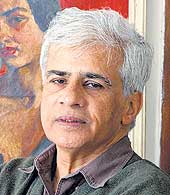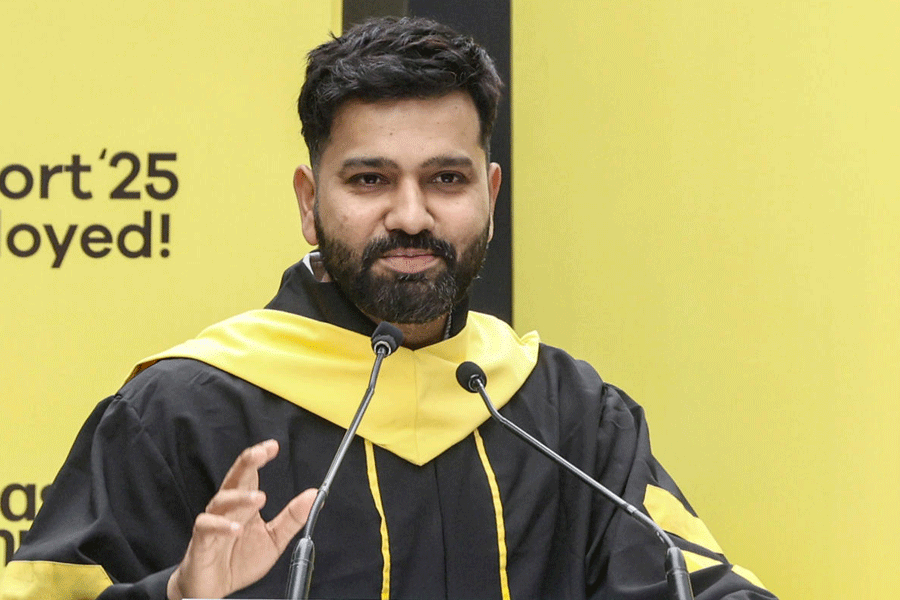 |
Vivan Sundaram has never forgotten the first painting that he sold for a princely Rs 100. “It was a landscape and a friend bought it,” says the artist. Today Sundaram is a top-league name in the Indian art world and his works travel for shows from Baroda to Budapest where they sell for six-figure sums.
But Sundaram has another claim to fame in the world of Indian art. He’s the nephew of legendary artist Amrita Sher-Gil and he’s the main custodian of her legacy. If his own work doesn’t keep him busy enough, he also spends a large part of his time on the larger-than-life aunt who he never met.
He’s just back from Munich where 48 of his aunt’s works are on display for three months at Haus der Kunst — a first for any Indian artist. The show will continue till January and is expected to be followed by a similar exhibition of Sher-Gil’s work at London’s Tate Modern next year.
If that’s not enough, Sundaram is also working overtime on a huge volume on Sher-Gil that’s almost finished. It’s a work that has been in the making for several years. “It has entailed a lot of research and history,” he says.
The 650-page book will have letters, photographs and works of his famous aunt. “Of course, many wonderful letters have been destroyed. What I have are letters to her mother and some to her sister, who is my mother,” says Sundaram whose mother was Amrita Sher-Gil’s younger sister. Sher-Gil died aged 28.
Was Sundaram influenced by his aunt and did she inspire him to become an artist? He’s a bit uncertain about that. “You know, she died even before I was born,” he says. But he grew up surrounded by her in her memories. His home was full of her works.
It was only later in life that he became conscious of his aunt’s unique position in the Indian art world. “It was when I went to art college in Baroda that I began to understand her and her work.”
Today, it’s a bit more difficult to leave behind Sher-Gil’s legacy and his work is sometimes intertwined with it. He has, for instance, made an installation that was part of the Sher-Gil exhibition in Budapest and he has also made a video for the Sher-Gil Archive.
But Sundaram is careful to keep his main focus on his own work. “I have no fixed rules on how much time I devote to my aunt’s work and my own. I always do more than two things at the same time,” he says.
The son of a senior civil servant, Sundaram was born in Shimla and spent his childhood shuttling between Shimla and Delhi. He studied in Doon School. Did he always dream of being an artist? Not really. He only took up art during his schooling.
Later, he went to the Faculty of Fine Arts in Baroda. And at 23, he went for his post-diploma to London’s Slade School on a Commonwealth Scholarship for four years. Here he interacted and met with painters like R.B. Kitaj, who was a strong influence. “He was a famous artist and would come to Slade to look at our work. The system was that for post graduate students, senior artists like him would come occasionally to look at our work,” he says.
Sunderam was fascinated by Kitaj and his emphasis on pop art. In fact, in 1980, when Sundaram exhibited Place for People, Kitaj’s influence was quite visible.
A conceptual artist, Sundaram loves experimenting. He works with installation, photo film and painting. Unlike other artists, he isn’t particular if he has a trademark style or not.
As an artist he’s always experimented with new forms. And in his search, he’s quite unmindful if his work is commercially viable. So, when he says, “my work does not sell in the market,” it means that his work goes to people with a “much greater engagement with art.”
But his works have been truly innovative. Take for instance, his solo exhibition called living. it.out.in.delhi. Sundaram created a cityscape out of garbage. “I collected waste and used many recycled objects that I bought from the kabariwalla,” he says.
He has, during his career, done over 100 solo and group exhibitions around the world. But art isn’t the only thing that keeps Sundaram busy. He’s a founder-member of SAHMAT (Safdar Hashmi Memorial Trust) and has organised art camps and activities for the organisation.
Now, he’s also organising the Delhi Biennale, a mega art exhibition for 2008. “The main focus will be Asian artists,” he says.
And when the Sher-Gil exhibitions in Munich and London are over, Sundaram and his sister Navina, who co-owns the works, will have to think of another place and another time to exhibit the works. For the siblings who have inherited the treasures need to ensure that Sher-Gil’s works are not gathering dust.
Sundaram also takes time to read and sometimes he quietly slips out of his spacious home to get fresh air. “I love the open space in the colony (he lives in Delhi’s smart Shanti Niketan),” he says. After a long walk, Sundaram returns home to his art or his book and a busy life in the world of art.
Photograph by Rupinder Sharma










